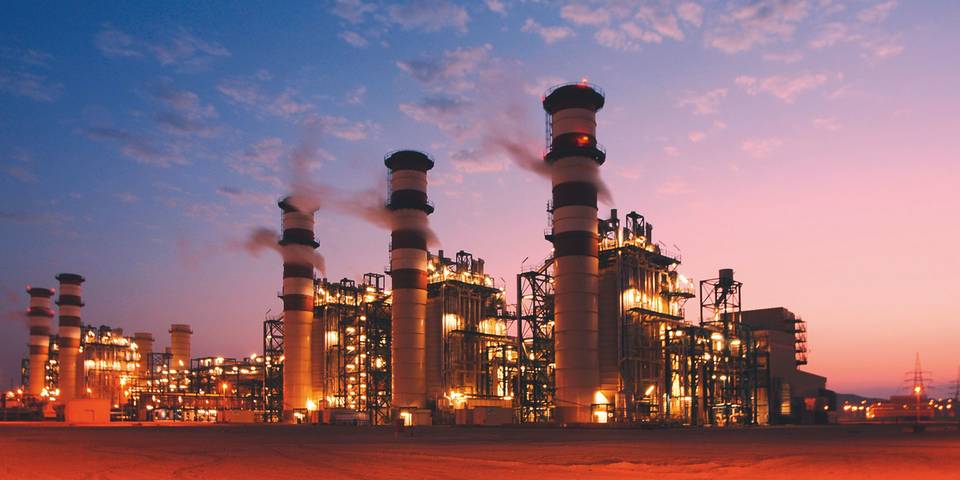Combined cycle power plants

Combined cycle power plants generate electricity. In this type of power plant, the gas turbine and steam turbine processes are combined.
Basic principle: Electricity is generated using one or two gas turbines and a steam turbine. The gas turbine is powered using natural gas, biogas or fuel oil. Other fuels can also be used for the burner in the steam boiler. Either each turbine drives its own generator (multiple shaft system), or one gas turbine, along with the steam turbine (which can be disconnected), drives the generator on a common shaft (single shaft system). The hot exhaust gases are used to generate steam in a heat recovery steam generator. The steam then expands via the usual steam turbine process. The gas turbine produces about two thirds of the electric power and one third is produced by the steam process. It is called a combined process when, in addition to the use of the exhaust gas heat from the gas turbine, the steam power and therefore the electric power of the steam turbine is increased by additionally firing the steam generator. Combined cycle power plants can generate between 80 and 830 megawatts from each gas/steam turbine unit.
Combined cycle power plant with connected seawater desalination plant

In January 2012, Welland & Tuxhorn was awarded a contract to supply key components for the Ras Al Khair combined cycle power plant with connected seawater desalination plant in Saudi Arabia. Among other things, Welland & Tuxhorn was supplying 10 high pressure bypass stations (DN 20"/87" – PN 1500#/300#) including the hydraulic actuator systems. The plant is being built 75 km north-west of Jubail. With an installed capacity of 2400 MW, it will supply electricity for an aluminium smelting plant, as well as around billion litres of drinking water daily for the five million inhabitants of the capital city Riyadh.
